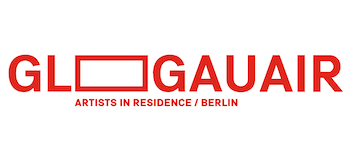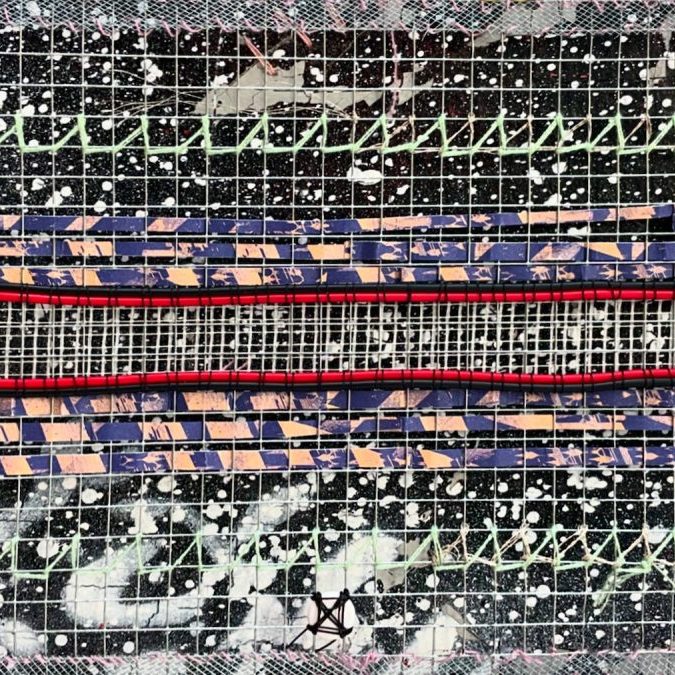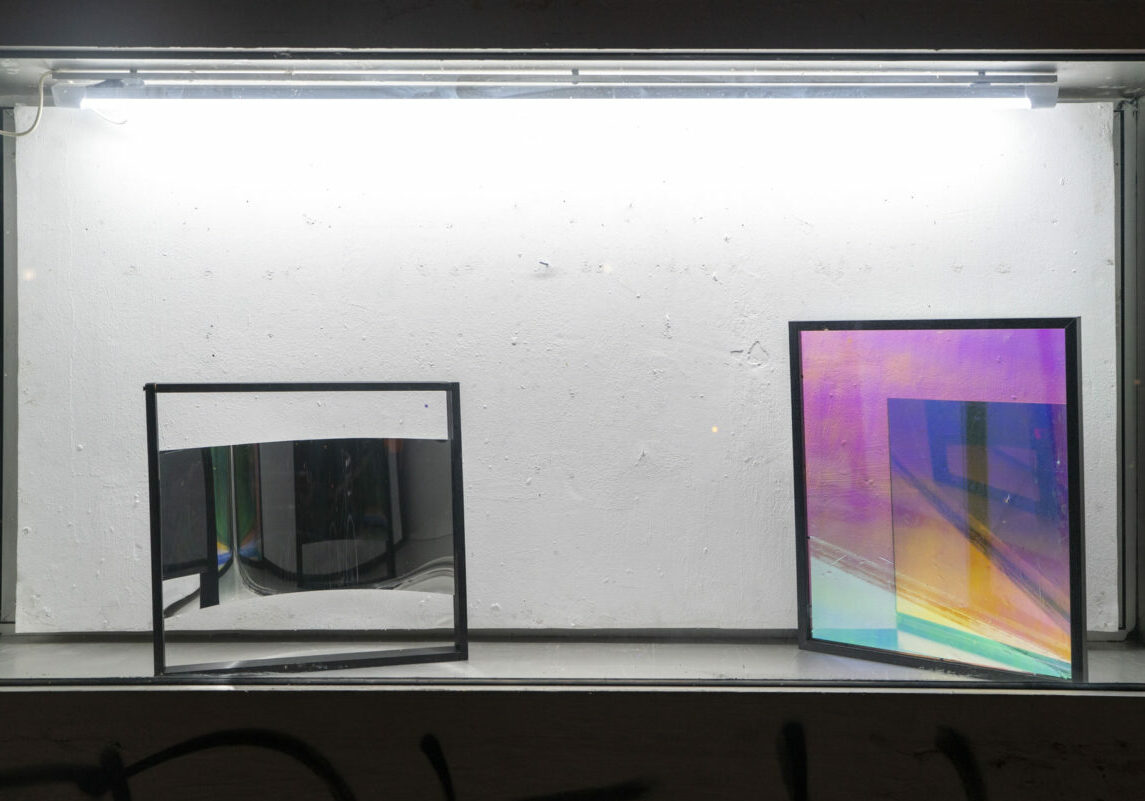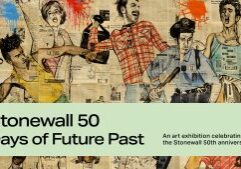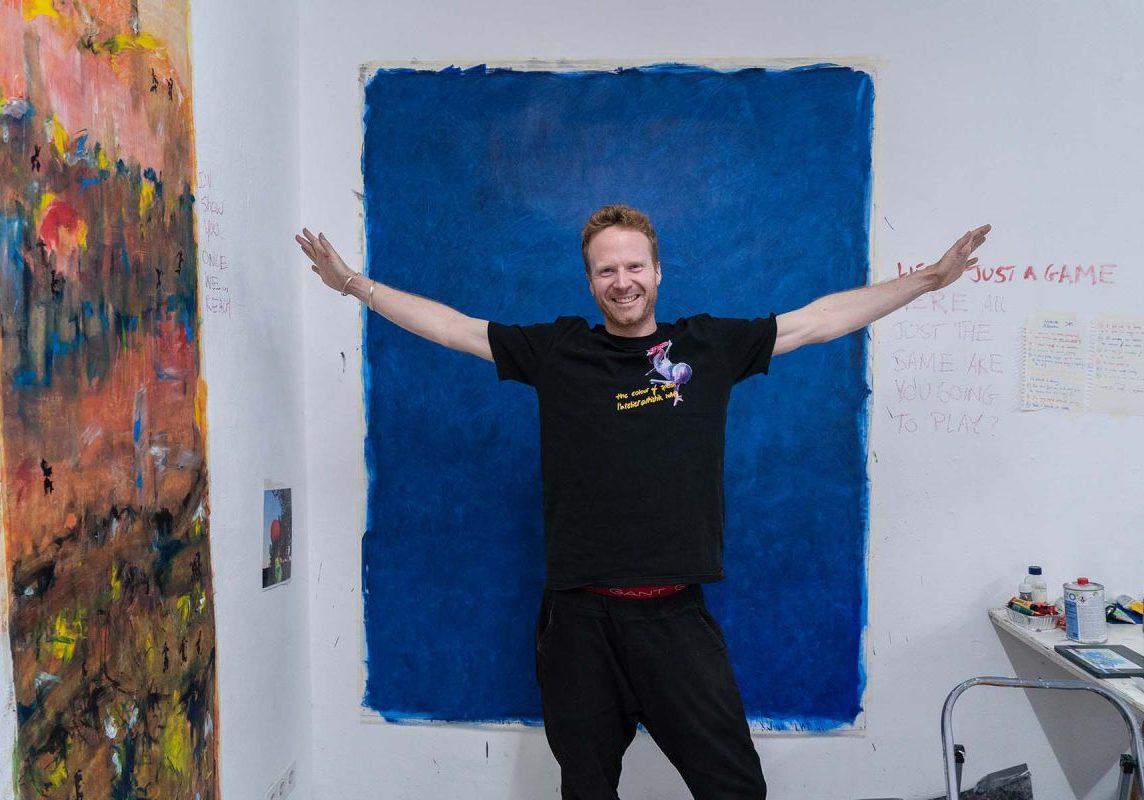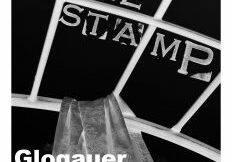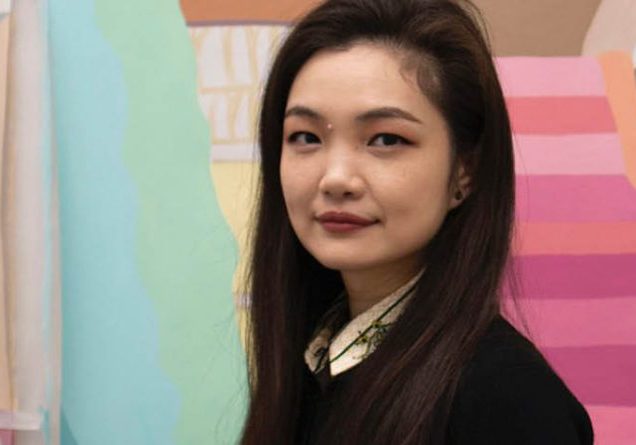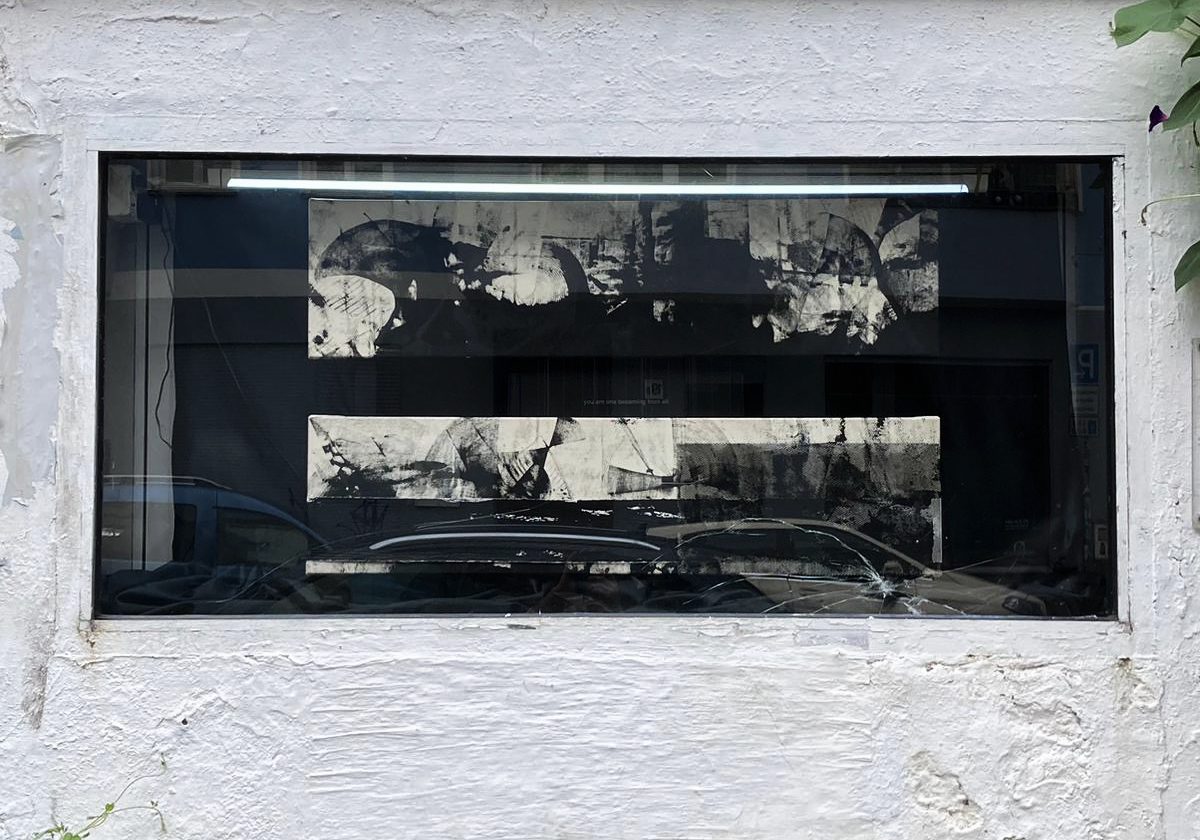Meet the Artist // Bryn McConnell
Bryn McConnell is a visual artist working across mixed-media collage, textiles, and abstract painting, often incorporating and transforming found objects. With a keen eye for pattern recognition and material composition, Bryn constructs visually layered artwork that weaves relationships between seemingly disparate elements. With a degree in Architecture and Art at Tulane University, Bryn began her career in New Orleans before relocating to Berlin in 2025 to expand her practice through a broader international context and deepen her exploration of art as a vehicle of connection.
Can you tell me a bit about yourself and what you’re working on during your residency here?
I’m from the United States, and I studied architecture before deciding I wanted to go into the arts as a career. I decided I just couldn’t sit at a desk in front of a computer all day long, and I had to do something with my hands. I delved into an artistic practice that then led me to want to move to Berlin. I arrived here in June, and my intention is to stay for several years. The work that I’ve been doing here at GlogauAIR is about this journey and what it means to move to a new country. This process of getting to know a new city, especially a foreign city, and also the personal journey that goes along with that.
One of the guiding themes for my work is about respectfully integrating. Not to impose yourself onto a new place, but I think Berlin is very receptive to foreigners. It’s almost more normal to not be from here. Although having lived in New Orleans, it was not necessarily the same there. In some ways, New Orleans is more sensitive to this because of Hurricane Katrina. When the entire city was displaced, many of the locals could not return and it left this massive void. People died. It was a tremendous tragedy and the city gentrified even quicker than other places.
Being a Tulane student, you’re at a wealthy, primarily white college in a primarily Black city. That’s why with my piece, titled Kottbusser Damm, I am making a point about understanding the ground you’re walking on. Of course, Berlin is a city of opportunity, but it’s not a blank canvas. It’s not here for you to impose on, but for you to align with. Mesh, weave into it.

I’d love to learn more about your weaving process. You talked before about how your process is mathematical and formulaic. I wonder, is that related to your architecture studies?
I think it’s intertwined. I was a math kid. I was good at math class, but not English class. Architecture is about geometry, but it is also creative. My work started with weaving paper. I would strip paper with an X-Acto blade and weave it into a grid structure. I just enjoy the precision. Before going to college, I was a ballerina. I thought that was going to be my life journey before deciding a degree would be a better idea. It’s really about this perfectionism and precision, and that there’s a correct answer.
If the grid is wrong, then you see it. It’s not that what’s wrong is good or bad, but it just is…you know if it’s in line or not.
Are you coming up with the patterns?
The patterns are intuitive, but I always have a set of parameters or rules that start a project. Whether it’s a specific story or if I’m doing a map of something. A lot of the first pieces I did in Berlin, I’m tracing a map or diagramming the streets. In my piece, “Breaking Bad Habits,” the red had to be in straight lines and the green had to be circles. When I added the red square to highlight one of the circles, I thought, this still needs to be a square.
In a study piece I made with columns of thread, I coded it. I picked eight colors because I had rules for myself. I can use these colors four times and each overlaps each other once. So it’s like setting your constraints before exploring. It’s something I learned in architecture school as well.
Before you design a building, there’s a lengthy research process. What’s the land typography? What buildings exist around here? What are your building codes? How high can you build? You’re lining up all of your parameters before you start designing and working within a framework.
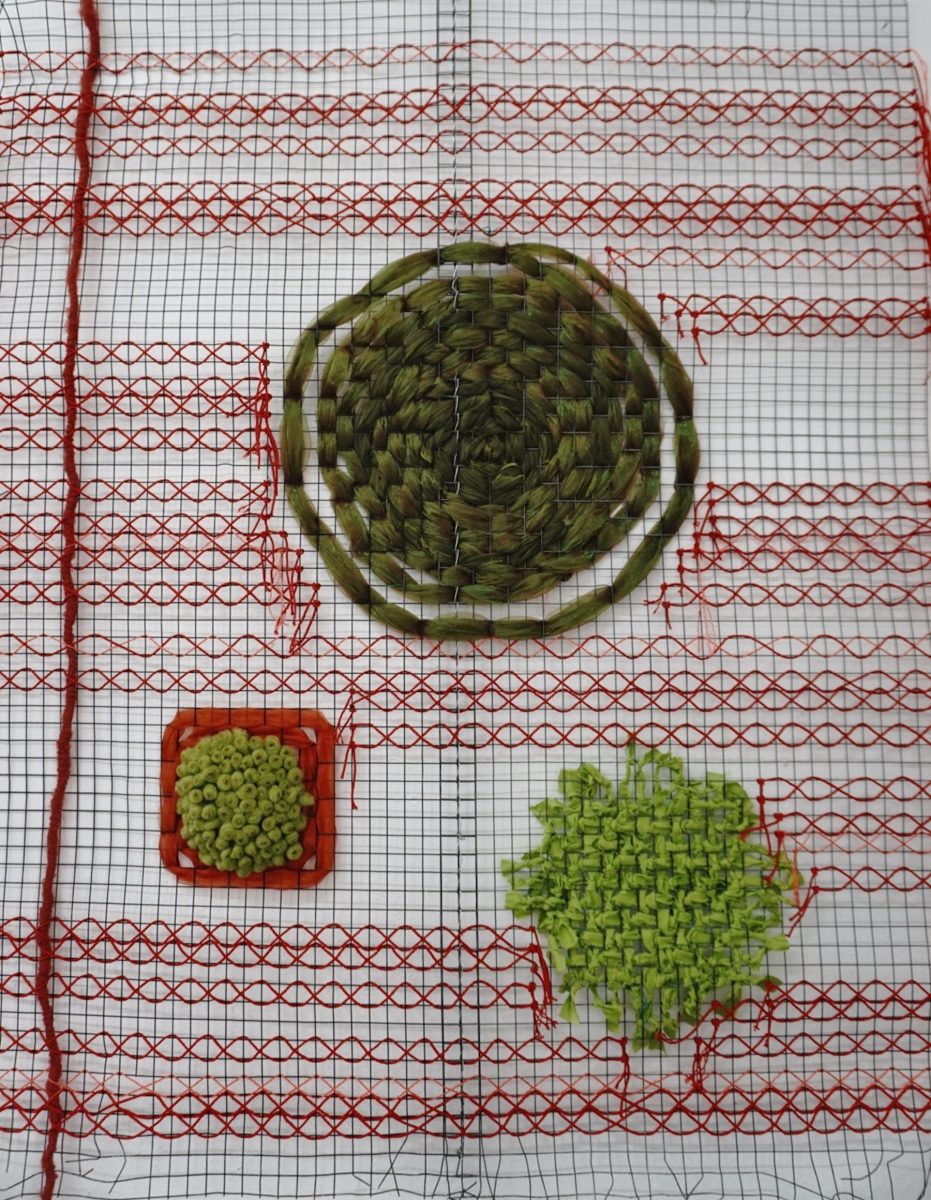
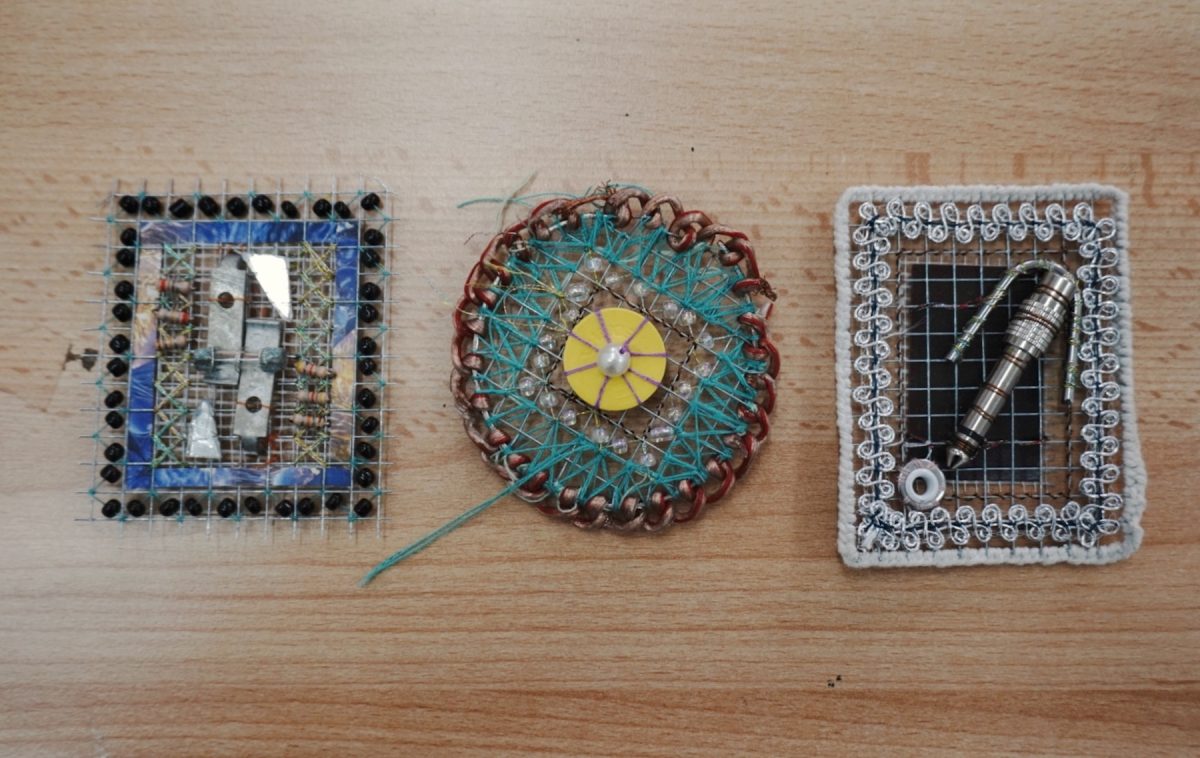
I’m interested in your emotional backstory to these weavings. What sparked this journey for you?
With the first works that I did, I was very much analyzing the streets. I started from looking down, analyzing the ground, to then analyzing myself and making a piece that was very internal. Then with my most recent work, I feel like I’m looking up. It’s about gaining confidence and familiarity with Berlin. I know what I’m doing, I know where I want to go.
I guess it’s very analytical and diagrammatic in that way. It’s like calibrating your emotions. Kind of making a logical sense to the process of being here. But also, I didn’t plan this. I always need to finish the piece, before I ask, okay, what was this about? The idea started with colors or a pattern that I like. I want to replicate this pattern. Then once I’ve finished that, I can see it on the wall, and I think about it for a second, and realise, this is what I was thinking about while I was making this.

Your art is heavily influenced by place. How has your work shifted visually and aesthetically, moving from New Orleans to Berlin?
I like to recycle things. Just based on what’s available is different. I used to have a shop I could go to in New Orleans that salvaged building material for one dollar a piece. Or buckets and buckets of bottle caps. You could just pick them up and weigh it out and buy them. It’s different in Berlin just by what’s available. It’s what comes to you. The first piece of mesh that came to me I thought , this is interesting. Let me try working with that. I think the city lends you its tools.
With color, certainly, New Orleans is completely different. It’s tropical. Berlin has its gray-black aesthetic. I’m not so concerned about what people are going to think, but it’s what’s available. With the work I did with paper. It was all recycled paper. I was working with these bright colors, like pinks and neons. I just think people appreciate that sort of thing more in New Orleans.

Interview Shay Rutkowski (@sruutrut)
Photos Yasemin Erguvan (@yaseminerguvan)
